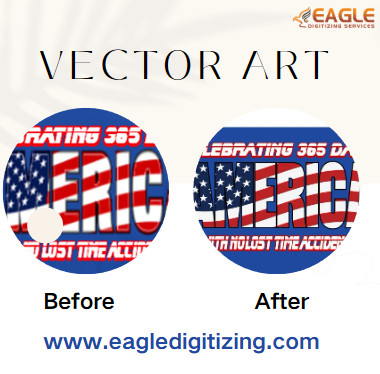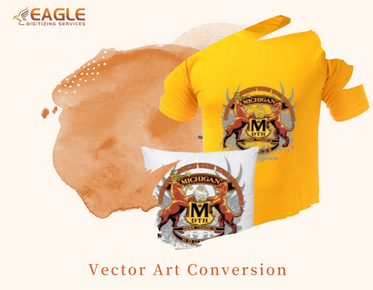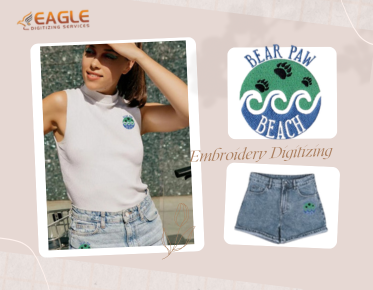Master Vector Art Creation with Stock References
Creating vector art is an exhilarating journey of turning ideas into crisp, scalable visuals. Yet, even the most imaginative artists occasionally need a boost of inspiration or a tangible reference. Enter stock references—these handy resources can be pivotal in guiding and enhancing your vector art creations. Let's dive into how stock references can transform your artistic process. For the top-notch online vector conversion, don't hesitate to get in touch with us.
Understanding Stock References
What Are Stock References?
Stock references are pre-existing images available for public or licensed use, serving as visual aids for artists and designers. They come in various forms, from photos to illustrations to vectors. These resources provide a foundation or a starting point for artists to build upon, ensuring accuracy and adding depth to their work.
Types of Stock References: Photos, Illustrations, and Vectors
Stock references can be categorized into three main types:
1. Photos: High-resolution images capturing real-life subjects, perfect for realistic textures and details.
2. Illustrations: Hand-drawn or digitally created images that offer stylized visuals, ideal for adding artistic flair.
3. Vectors: Scalable graphics composed of paths and points, are essential for creating sharp and precise designs without quality loss.
Benefits of Using Stock References in Vector Art
Incorporating stock references into vector art offers numerous benefits. They provide a reliable foundation, ensuring proportions and perspectives are accurate. Stock references save time, enabling artists to focus on the creative aspects rather than starting from scratch. Additionally, they inspire new ideas and help artists overcome creative blocks by offering fresh perspectives.
Choosing the Right Stock References
Tips for Selecting High-Quality Stock Images
High-quality stock images are essential for achieving professional results. Look for images with high resolution, sharp focus, and balanced lighting. Ensure the subject is clear and the composition is strong, as these factors significantly impact the quality of your final artwork.
Matching Stock References to Your Art Style
Selecting stock references that complement your art style is crucial. Whether you prefer a minimalist, abstract, or hyper-realistic approach, choose images that align with your aesthetic. This ensures cohesion and enhances the overall impact of your vector art.
Avoiding Overused and Cliché Stock Images
Avoid using clichéd and overused stock images to maintain originality. Instead, seek out unique and lesser-known references that bring a fresh perspective to your work. This not only sets your art apart but also keeps it engaging and innovative.
Popular Sources for Stock References
Free vs. Paid Stock Reference Sites
Both free and paid stock reference sites have their merits. Free sites like Unsplash and Pexels offer a vast selection of images at no cost, making them accessible to beginners. Paid sites like Shutterstock and Adobe Stock provide premium, high-resolution images, and exclusive content, ideal for professional projects.
Top Websites for Stock Photos
For top-notch stock photos, consider websites such as:
● Unsplash: High-quality, free images with a diverse range.
● Shutterstock: Extensive library with millions of premium images.
● Adobe Stock: Integrated with Adobe Creative Cloud, offering seamless workflow integration.
Best Platforms for Vector Stock Images
For vector stock images, platforms like:
● Vecteezy: Offers free and premium vector graphics.
● Freepik: Provides a vast selection of vectors and editable files.
● iStock: High-quality vectors with a wide variety of styles.
Hidden Gems: Lesser-Known Stock Image Sites
Explore lesser-known stock image sites like:
● Reshot: Unique, non-stocky images.
● Pixabay: Free images with a broad selection.
● StockSnap: High-resolution images are added weekly.
Organizing Your Stock References
Creating a Digital Library
A well-organized digital library of stock references is invaluable. Use cloud storage solutions like Google Drive or Dropbox to store and back up your images, ensuring easy access from any device.
Categorizing and Tagging Images
Organize your stock references by categorizing and tagging them. Group images by themes, colors, or subjects, and use tags for quick retrieval. This systematization saves time and enhances productivity.
Using Reference Boards and Mood Boards
Reference boards and mood boards are excellent tools for visual planning. Tools like Pinterest or Milanote allow you to compile and organize your references, providing a clear visual direction for your projects.
Incorporating Stock References into Your Workflow
Importing Stock Images into Vector Software
Import stock images into your vector software, such as Adobe Illustrator or CorelDRAW, as a reference layer. This layer can be locked to prevent accidental edits, allowing you to trace or use it as a guide.
Setting Up Your Workspace for Easy Reference
Set up your workspace to keep stock references easily accessible. Use multiple monitors or split-screen setups to view references alongside your vector art, streamlining the creative process.
Using Multiple References for a Single Project
Combine multiple references to enrich your projects. Mix and match elements from different images to create a unique composition, adding depth and complexity to your artwork.
Techniques for Tracing Stock References
Manual Tracing vs. Auto Tracing
Manual tracing offers precision and control, allowing you to infuse your style into the artwork. Auto tracing, available in tools like Illustrator, can save time but may require adjustments for accuracy and clean lines.
Tips for Clean and Accurate Tracing
For clean and accurate tracing, use the pen tool with smooth, continuous paths. Zoom in for detailed areas and adjust anchor points and handles for smooth curves. Consistent practice enhances tracing skills over time.
Adding Your Own Style to Traced Elements
Personalize traced elements by adding your stylistic touches. Modify lines, shapes, and colors to infuse your unique artistic voice, ensuring the final piece reflects your creativity.
Using Stock References for Color Palettes
Extracting Colors from Stock Photos
Extract colors from stock photos to create harmonious palettes. Use tools like Adobe Color to sample hues directly from images, ensuring a cohesive and visually appealing color scheme.
Creating Harmonious Color Schemes
Develop harmonious color schemes by combining extracted colors with complementary or analogous shades. This technique enhances the visual appeal and balance of your vector art.
Applying Color Palettes to Your Vector Art
Apply the curated color palettes to your vector art, maintaining consistency and unity. Experiment with gradients, shadows, and highlights to add depth and dimension to your designs.
Creating Realistic Vector Art with Stock References
Using Stock Photos for Texture and Detail
Incorporate textures and details from stock photos to add realism to your vector art. Techniques like overlaying textures and using blend modes can simulate intricate surfaces and fine details.
Adding Depth and Dimension with References
References help in understanding light, shadow, and perspective. Use them to add depth and dimension, creating lifelike and three-dimensional vector art that captivates viewers.
Blending Multiple References for Realism
Blend elements from various stock references to achieve a realistic effect. Combine different textures, colors, and details, ensuring seamless integration for a polished final piece.
Stock References for Character Design
Finding References for Anatomy and Poses
Accurate anatomy and dynamic poses are vital for character design. Use stock references of human figures and action shots to capture correct proportions and natural movements.
Using Portraits for Facial Features
Portrait references are invaluable for detailing facial features. Study expressions, angles, and lighting to render lifelike and expressive characters.
Creating Dynamic Characters with Action Shots
Dynamic characters require dynamic poses. Use action shots to understand body mechanics and motion, translating this energy into your vector artwork for vibrant and engaging characters.
Environmental and Background References
Designing Detailed Backgrounds
Detailed backgrounds enrich your vector art. Use environmental references to capture natural elements and textures, creating immersive and visually rich scenes.
Using Landscape Photos for Natural Scenes
Landscape photos provide excellent references for natural scenes. Study the composition, colors, and lighting to replicate serene and realistic backgrounds in your vector artwork.
Architectural References for Urban Art
Urban scenes benefit from architectural references. Use these to accurately depict buildings, streets, and urban elements, enhancing the authenticity of your cityscapes.
Stock References for Pattern Design
Finding Inspiration in Stock Textures
Stock textures can inspire unique pattern designs. Explore different materials and surfaces to create intricate and captivating patterns that stand out.
Creating Seamless Patterns from Photos
Seamless patterns require precision. Use stock photos to create repeating motifs, ensuring they tile seamlessly for a professional and polished look.
Designing Complex Patterns with Multiple References
Combine multiple references to design complex patterns. Layer different textures, shapes, and colors, crafting detailed and visually intriguing patterns that captivate the viewer.
Using Stock References for Typography
Finding Reference Images for Lettering Styles
Reference images for lettering styles guide typography design. Study different fonts and hand-lettered styles to develop unique and personalized typefaces.
Creating Custom Fonts and Text Effects
Create custom fonts and text effects by tracing and modifying lettering references. Experiment with different effects to add personality and flair to your typography.
Combining Text and Image References
Integrate text with image references to create cohesive designs. Ensure the typography complements the visual elements, enhancing the overall aesthetic and readability.
Inspiration and Idea Generation
Using Stock References to Spark Creativity
Stock references can ignite creativity by providing new ideas and perspectives. Explore different themes and subjects to inspire fresh and innovative vector art concepts.
Combining Unrelated Images for Unique Concepts
Combine unrelated stock images to generate unique concepts. This juxtaposition can lead to unexpected and original designs, pushing the boundaries of your creativity.
Creating Mood Boards for Themed Projects
Mood boards are essential for themed projects. Compile stock references that align with your project's theme, setting a clear visual direction and ensuring consistency throughout your work.
Overcoming Challenges with Stock References
Dealing with Low-Resolution Images
Low-resolution images can be challenging. Use vector tools to trace and refine these references, enhancing their quality and ensuring they meet professional standards.
Modifying Stock References to Fit Your Needs
Adapt stock references to suit your specific needs. Crop, resize, and edit elements to align with your vision, maintaining flexibility and creativity in your workflow.
Avoiding Over-Reliance on Stock Images
While stock references are helpful, avoid over-reliance. Use them as a guide rather than a crutch, ensuring your originality and artistic voice shine through.
Customizing Stock References
Editing and Enhancing Photos Before Use
Edit and enhance stock photos to match your vision. Adjust brightness, contrast, and color balance to create a cohesive look that integrates seamlessly into your vector art.
Combining Elements from Different References
Merge elements from different references to create unique compositions. This technique allows for greater creativity and customization, ensuring your artwork stands out.
Adding Personal Touches to Stock-Based Art
Infuse your personal touches into stock-based art. Modify elements, add details, and incorporate your style to transform stock references into original masterpieces.
Staying Updated with Stock Reference Trends
Following Trends in Stock Photography
Stay updated with trends in stock photography to keep your work relevant. Follow industry updates and popular styles, integrating contemporary elements into your vector art.
Adapting New Styles and Techniques
Adopt new styles and techniques to evolve your art. Experiment with current trends and innovative approaches, maintaining a fresh and modern aesthetic.
Keeping Your Art Fresh and Relevant
Regularly update your stock references to keep your art fresh. Continuous learning and adaptation ensure your work remains engaging and relevant in a dynamic artistic landscape. For the excellent online vector artwork conversion, have no qualms about getting in touch with us.
Stock references are invaluable tools in the creation of vector art, providing inspiration, accuracy, and efficiency. By understanding how to choose, use, and customize these references, artists can elevate their work and push the boundaries of their creativity. Embrace stock references as a means to enhance your artistic journey, transforming ideas into stunning vector art masterpieces.



